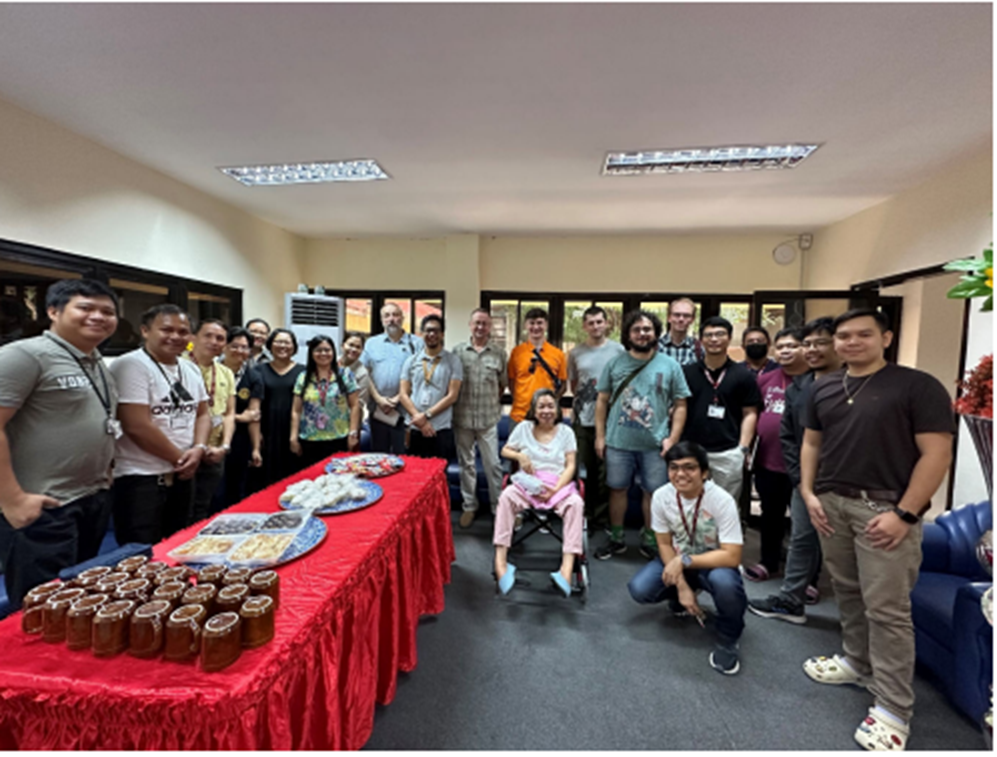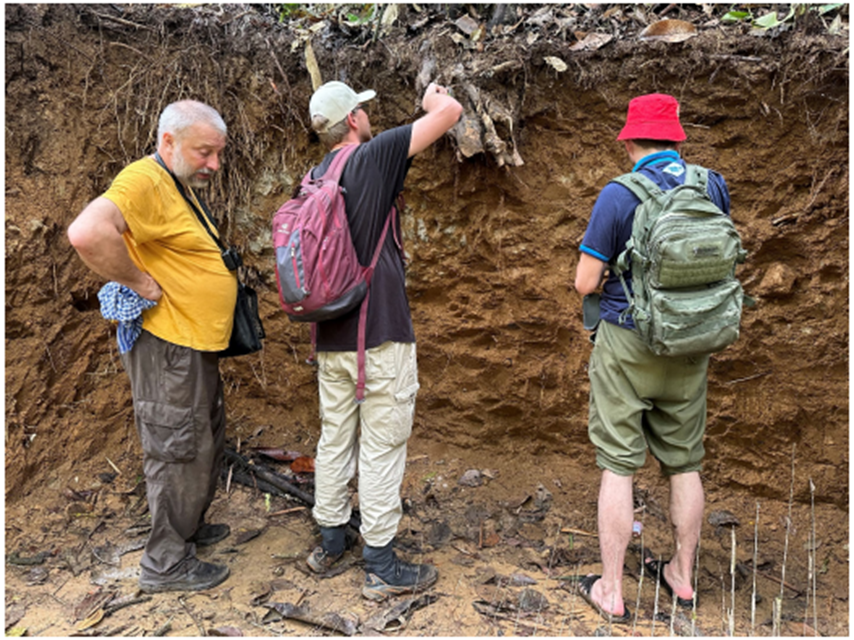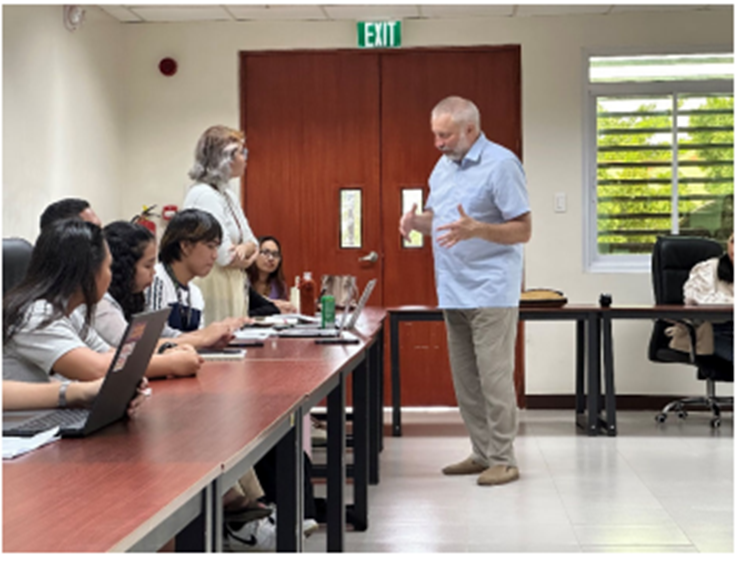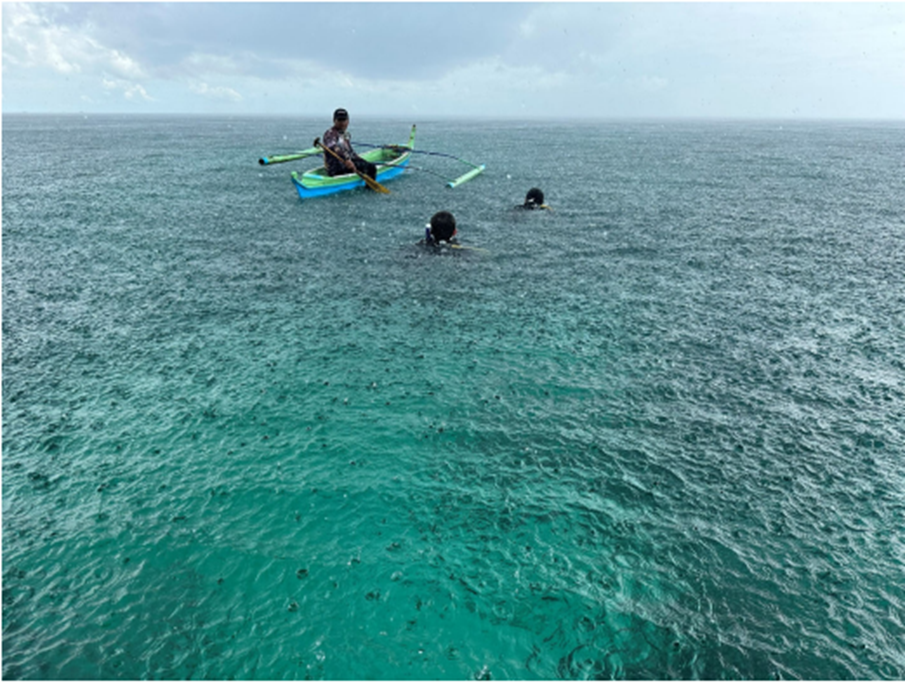
During the implementation of the project “Development of technologies for the control of parasitic organisms in tropical ecosystems based on Omics approaches”, supported by the Ministry of Science and Higher Education of the Russian Federation, a trip to the Philippines was carried out in November-December 2023. 6 people took part in the expedition - parasitologists, zoologists and soil biologists: project leader Dr. Spiridonov S.E., Corresponding Member of the Russian Academy of Sciences, Doctor of Biological Sciences; A.V. Tiunov, Head of the Laboratory of Phytoparasitology, Institute of Ecological Ecology, Russian Academy of Sciences; Ph.D. Pridannikov M.V.; junior researcher Efeikin B.D.; leading engineer Krapivin V.A. and graduate student Sotnikov I.V.

On the first day of the team's stay at the Mindanao State University - Iligan Institute of Technology (MSU-IIT), a brief meeting was held with representatives of the Philippine side - Dr. Joey Martinez (J.J. Martinez) and Hopi Dr. Nanette Sumaya (H.N. Sumaya), about the rough plan for research in the area Iligan. It was decided to distribute the days available to the Russian group in such a way as to give all participants the opportunity to collect the material that interests them.

When planning the first trip, the Russian participants asked the host party to take them to a point near the city of Iligan (Lanao del Norte province), where in the relatively recent past there had been a severe flood with a significant amount of sand and sandy soil being carried ashore and sediments forming on the shores. Moreover, this place of flooding should have been covered with herbaceous and shrubby vegetation. Philippine colleagues proposed such a place near the city of Iligan - the Abuno district on the banks of the Tabod River (Abuno Iligan City Lanao-del-Norte, Philippines, coordinates 8.182 N, 124.258 E). At this point, on both sides of the bridge over the river, 38 soil samples were collected, each weighing from one to two kilograms. The soil surface was covered with herbaceous vegetation, with small bushes in some places. On the other side of the bridge, samples were collected under the canopy of palm trees, with almost no herbaceous vegetation due to the very low illumination of the ground surface (almost complete closure of the palm canopy). A total of 8 samples turned out to be positive, of which three were selected for further study. Nematodes from all these samples were identified by morphological characteristics as representatives of the genus Heterorhabditis.

In the following days, two trips were made to the area of the Mandulog River. The main points for collecting material were in the area of the Dodiongan Bridge (8.258 N, 124.302 E). This part of the province of Lanao del Norte is quite densely populated and used for agricultural purposes. More than 30 soil and water samples were collected from the beds of small streams flowing into the Mandulog River.
The infestation of endoparasites in Philippine bovids (family Bovidae) was studied. The material for the work was freshly excreted excrement of goats, dairy cows, beef bulls and buffaloes collected during the expedition. Samples were collected wet and stored frozen. As a result, endoparasites from two large taxonomic groups were discovered: helminths and protists. Among the first to be identified were the eggs of nematodes of the order Strongylida, which parasitize the gastrointestinal tract. In particular, the so-called small strongylids, as well as representatives of the genus Nematodirus. In addition, trematode eggs were discovered, presumably from the genus Paramphistomum. The isolated protists are represented by coccidia oocysts from the genus Eimeria. Strongylids and Eimeria parasitize in the small intestine of bovids, and the detected trematodes live in the rumen (forestomach).
Next, a trip was made to the island of Tawi-Tawi with the aim of searching for and collecting marine mollusks - intermediate hosts of various parasites, including those dangerous to humans. As part of the study of marine molluscs around the island, samples were collected from a variety of locations, including intertidal zones and coral reef areas. The study aimed to examine the composition, diversity and abundance of shellfish, and their relation to environmental environmental parameters such as water quality, total organic matter and calcium carbonate content. During the study, 43 species of mollusks were identified, of which 41 species belonged to the class of gastropods (Gastropoda), represented by 18 families, and 2 species belonged to the class of bivalve mollusks (Bivalvia) from 2 families. Diversity analysis showed high values of diversity and evenness in the two study stations. One of the stations turned out to be dominant in the number of gastropods Cerithium stercusmuscarum, which accounted for almost a third of the total population. Canonical correspondence analysis indicated that total organic matter and calcium carbonate in sediment may have influenced the abundance of the mollusk community at this station. During the opening of the collected mollusks, flukes were discovered, which, apparently, represent new species. This discovery makes an important contribution to the understanding of the biodiversity and ecology of Mindanao's marine molluscs, and expands knowledge of parasitic relationships in marine ecosystems.
